#generativemodels
Text
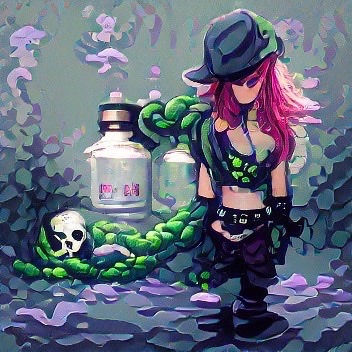


«Poison owner” by @geneartor
When you have poison, you have a great temptation to drink it. It's like a gun you want to shoot if you have it. Or is that not everybody's?
#generativemodels#arte moderna#pictureoftheday#pictures#a magic steeped in poison#poisonous#poison band#poison dragon#acid#pirates#neural development#neural network#abstractpainting#abstraction#pixel graphics#pixelart
16 notes
·
View notes
Text
Meet Stable Cascade, a new and innovative text-to-image generation model by Stability AI. It uses a three-stage approach to produce high-quality images from text with faster inference times. Read our blog post to learn more about this amazing AI model.
#artificial intelligence#ai#open source#machine learning#machinelearning#StableCascade#StabilityAI#generativemodels
0 notes
Text
The World of Pixel Recurrent Neural Networks (PixelRNNs)

Pixel Recurrent Neural Networks (PixelRNNs) have emerged as a groundbreaking approach in the field of image generation and processing. These sophisticated neural network architectures are reshaping how machines understand and generate visual content. This article delves into the core aspects of PixelRNNs, exploring their purpose, architecture, variants, and the challenges they face.
Purpose and Application
PixelRNNs are primarily engineered for image generation and completion tasks. Their prowess lies in understanding and generating pixel-level patterns. This makes them exceptionally suitable for tasks like image inpainting, where they fill in missing parts of an image, and super-resolution, which involves enhancing the quality of images. Moreover, PixelRNNs are capable of generating entirely new images based on learned patterns, showcasing their versatility in the realm of image synthesis.
Architecture
The architecture of PixelRNNs is built upon the principles of recurrent neural networks (RNNs), renowned for their ability to handle sequential data. In PixelRNNs, the sequence is the pixels of an image, processed in an orderly fashion, typically row-wise or diagonally. This sequential processing allows PixelRNNs to capture the intricate dependencies between pixels, which is crucial for generating coherent and visually appealing images.
Pixel-by-Pixel Generation
At the heart of PixelRNNs lies the concept of generating pixels one at a time, following a specified order. Each prediction of a new pixel is informed by the pixels generated previously, allowing the network to construct an image in a step-by-step manner. This pixel-by-pixel approach is fundamental to the network's ability to produce detailed and accurate images.
Two Variants
PixelRNNs come in two main variants: Row LSTM and Diagonal BiLSTM. The Row LSTM variant processes the image row by row, making it efficient for certain types of image patterns. In contrast, the Diagonal BiLSTM processes the image diagonally, offering a different perspective in understanding and generating image data. The choice between these two depends largely on the specific requirements of the task at hand.
Conditional Generation
A remarkable feature of PixelRNNs is their ability to be conditioned on additional information, such as class labels or parts of images. This conditioning enables the network to direct the image generation process more precisely, which is particularly beneficial for tasks like targeted image editing or generating images that need to meet specific criteria.
Training and Data Requirements
As with other neural networks, PixelRNNs require a significant volume of training data to learn effectively. They are trained on large datasets of images, where they learn to model the distribution of pixel values. This extensive training is necessary for the networks to capture the diverse range of patterns and nuances present in visual data.
Challenges and Limitations
Despite their capabilities, PixelRNNs face certain challenges and limitations. They are computationally intensive due to their sequential processing nature, which can be a bottleneck in applications requiring high-speed image generation. Additionally, they tend to struggle with generating high-resolution images, as the complexity increases exponentially with the number of pixels.
Creating a PixelRNN for image generation involves several steps, including setting up the neural network architecture and training it on a dataset of images. Here's an example in Python using TensorFlow and Keras, two popular libraries for building and training neural networks.
This example will focus on a simple PixelRNN structure using LSTM (Long Short-Term Memory) units, a common choice for RNNs. The code will outline the basic structure, but please note that for a complete and functional PixelRNN, additional components and fine-tuning are necessary.
PixRNN using TensorFlow
First, ensure you have TensorFlow installed:
pip install tensorflow
Now, let's proceed with the Python code:
import tensorflow as tf
from tensorflow.keras import layers
def build_pixel_rnn(image_height, image_width, image_channels):
# Define the input shape
input_shape = (image_height, image_width, image_channels)
# Create a Sequential model
model = tf.keras.Sequential()
# Adding LSTM layers - assuming image_height is the sequence length
# and image_width * image_channels is the feature size per step
model.add(layers.LSTM(256, return_sequences=True, input_shape=input_shape))
model.add(layers.LSTM(256, return_sequences=True))
# PixelRNNs usually have more complex structures, but this is a basic example
# Output layer - predicting the pixel values
model.add(layers.TimeDistributed(layers.Dense(image_channels, activation='softmax')))
return model
# Example parameters for a grayscale image (height, width, channels)
image_height = 64
image_width = 64
image_channels = 1 # For grayscale, this would be 1; for RGB images, it would be 3
# Build the model
pixel_rnn = build_pixel_rnn(image_height, image_width, image_channels)
# Compile the model
pixel_rnn.compile(optimizer='adam', loss='categorical_crossentropy')
# Summary of the model
pixel_rnn.summary()
This code sets up a basic PixelRNN model with two LSTM layers. The model's output is a sequence of pixel values for each step in the sequence. Remember, this example is quite simplified. In practice, PixelRNNs are more complex and may involve techniques such as masking to handle different parts of the image generation process.
Training this model requires a dataset of images, which should be preprocessed to match the input shape expected by the network. The training process involves feeding the images to the network and optimizing the weights using a loss function (in this case, categorical crossentropy) and an optimizer (Adam).
For real-world applications, you would need to expand this structure significantly, adjust hyperparameters, and possibly integrate additional features like convolutional layers or different RNN structures, depending on the specific requirements of your task.
Recent Developments
Over time, the field of PixelRNNs has seen significant advancements. Newer architectures, such as PixelCNNs, have been developed, offering improvements in computational efficiency and the quality of generated images. These developments are indicative of the ongoing evolution in the field, as researchers and practitioners continue to push the boundaries of what is possible with PixelRNNs.
Pixel Recurrent Neural Networks represent a fascinating intersection of artificial intelligence and image processing. Their ability to generate and complete images with remarkable accuracy opens up a plethora of possibilities in areas ranging from digital art to practical applications like medical imaging. As this technology continues to evolve, we can expect to see even more innovative uses and enhancements in the future.
🗒️ Sources
- dl.acm.org - Pixel recurrent neural networks - ACM Digital Library
- arxiv.org - Pixel Recurrent Neural Networks
- researchgate.net - Pixel Recurrent Neural Networks
- opg.optica.org - Single-pixel imaging using a recurrent neural network
- codingninjas.com - Pixel RNN
- journals.plos.org - Recurrent neural networks can explain flexible trading of…
Read the full article
#artificialintelligence#GenerativeModels#ImageGeneration#ImageInpainting#machinelearning#Neuralnetworks#PixelCNNs#PixelRNNs#SequentialDataProcessing#Super-Resolution
0 notes
Text
#theadventofgenerativeAI#machinelearningtechnique#globalgenerativeAImarket#abilityofgenerativeAI#GenerativeAIdemands#scalegenerativeAImodels#generativemodels#effectsofgrowinggenerativeAI#potentialofgenerativeAI#generativeAImodelcost
0 notes
Video
youtube
Adobe Firefly: The Free High Quality AI Art Generator
Do you want to go beyond simple text to image generation and create even more stunning art with AI? Then you need to check out Adobe Firefly, the ultimate generative AI tool. Firefly lets you generate images from text, generate text effects, recolor graphics, and more. And it's all free! Watch the full magic of Firefly in action and learn what you can do with it. You'll be blown away by the results! Plus, you can join the waitlist and get early access to Firefly. Don't miss this chance to take your AI image generation to the next level with Adobe Firefly.
#youtube#freetool#texttoimage#ArtGenerator#aitoolsforgraphicdesign#aitools#creativity#imagegeneration#generativemodels#generative#generativedesign#recolor#vectorgraphics#vectorart#texteffects#artificialintelligence#ai#generativeart#generativeai#aiartgenerator#aiartwork#adobefirefly
1 note
·
View note
Text
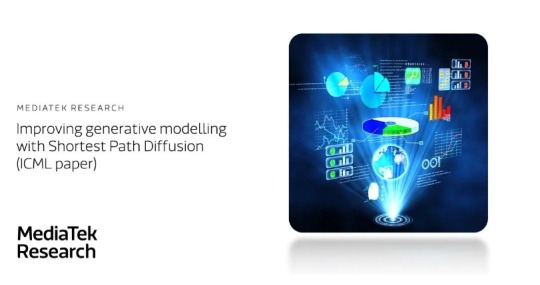
Improving generative modelling with Shortest Path Diffusion (ICML paper)
Diffusion models are currently the most popular algorithms for data generation, with applications in image synthesis, video generation, and molecule design. MediaTek Research has just published a paper showing that the performance of diffusion models is boosted by optimizing the diffusion process to minimize the path taken from the initial to the final data distribution
Website:
https://www.mediatek.com/blog/improving-generative-modelling-with-shortest-path-diffusion-icml-paper
0 notes
Text
A Step By Step Guide to Selecting and Running Your Own Generative Model
🚀 Exciting news! The world of generative models is evolving rapidly, and we're here to guide you every step of the way. Check out our latest blog post on "A Step By Step Guide to Selecting and Running Your Own Generative Model" to unlock the possibilities of personal assistant AI on your local computer.
🔎 Discover various models on HuggingFace, where you can experiment with different options before diving into API models. Look for models with high downloads and likes to gauge their usefulness. Also, consider your infrastructure and hardware constraints while selecting the perfect model for your needs.
💪 Start small and gradually work your way up to more complex tasks. Don't worry if you face hardware limitations – we've got you covered with optimization techniques shared in our blog post. Plus, platforms like Google Colab and Kaggle can assist you in running and assessing resource usage.
🎯 So, are you ready to leverage the power of generative models? Dive into our blog post using the link below to gain in-depth insights and make AI work for you. Let's navigate this sea of models together!
Read more: [Link to Blog Post](https://ift.tt/ylZ1fRT)
To stay updated with our latest AI solutions and industry insights, follow us on Twitter @itinaicom. And if you are interested in revolutionizing your customer engagement, be sure to check out our AI Sales Bot at itinai.com/aisalesbot.
- AI Lab in Telegram @aiscrumbot – free consultation
- A Step By Step Guide to Selecting and Running Your Own Generative Model
- Towards Data Science – Medium
#AI #GenerativeModels #HuggingFace #TechUpdate
List of Useful Links:
AI Scrum Bot - ask about AI scrum and agile
Our Telegram @itinai
Twitter - @itinaicom
#itinai.com#AI#News#A Step By Step Guide to Selecting and Running Your Own Generative Model#AI News#AI tools#Innovation#ITinAI.com#Kevin Berlemont#LLM#PhD#t.me/itinai#Towards Data Science - Medium A Step By Step Guide to Selecting and Running Your Own Generative Model
0 notes
Photo
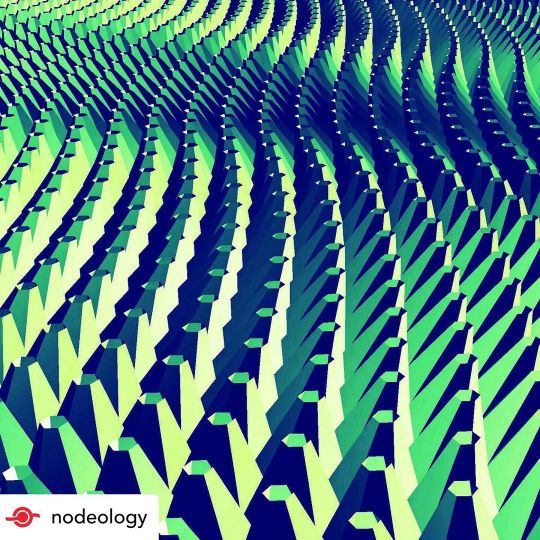
Art by @nodeology Algorithmic Control of Extrude Direction …………………………………… #parametricdesign #parametric #parametricmodeling #codingForm #algorithmic #algorithmicdesign #algorithmicmodeling #nodebased #visualprogramming #computationaldesign #creativecoding #generativedesign #generativemodeling #proceduralmodeling #proceduralgeneration #facadelovers #facadeporn #facades ……………………………………… Made with #nodeeditor in #moi3d not #grasshopper3d https://www.instagram.com/p/Cc8y2wzrjHH/?igshid=NGJjMDIxMWI=
#parametricdesign#parametric#parametricmodeling#codingform#algorithmic#algorithmicdesign#algorithmicmodeling#nodebased#visualprogramming#computationaldesign#creativecoding#generativedesign#generativemodeling#proceduralmodeling#proceduralgeneration#facadelovers#facadeporn#facades#nodeeditor#moi3d#grasshopper3d
0 notes
Photo
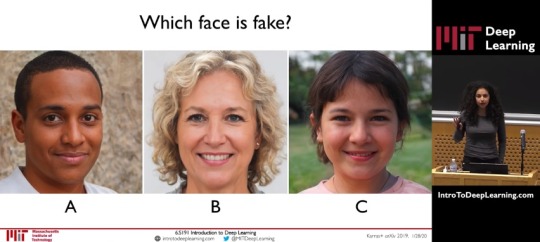
Deep Generative Modeling | MIT 6.S191 Source | YouTube | Alexander Amini https://human-engineers.com/wp-content/uploads/2020/03/HR-V2-6.jpg https://human-engineers.com/deep-generative-modeling-mit-6-s191/?feed_id=5252&_unique_id=60990b4575cfe https://human-engineers.com/deep-generative-modeling-mit-6-s191/?feed_id=5252&_unique_id=60990b4575cfe
0 notes
Photo

Deep Learning 31: (5) Generative Adversarial Network (GAN) : Limitations of GANs http://ehelpdesk.tk/wp-content/uploads/2020/02/logo-header.png [ad_1] In this lecture limitation of ge... #adversarial #andrejkaparthy #andrewng #androiddevelopment #angular #c #computersciencemachinelearning #css #dataanalysis #datascience #deeplearning #development #discriminatornetwork #docker #generative #generativeadversarialnetworkgan #generativeadversarialnetworks #generativeadversarialnetworksexample #generativemodels #generatornetwork #geoffreyhinton #iosdevelopment #java #javascript #machinelearning #modecollapse #modecollapsedcgan #modecollapsegan #neuralnetworks #node.js #python #react #unity #webdevelopment #yoshuabenjio
0 notes
Photo
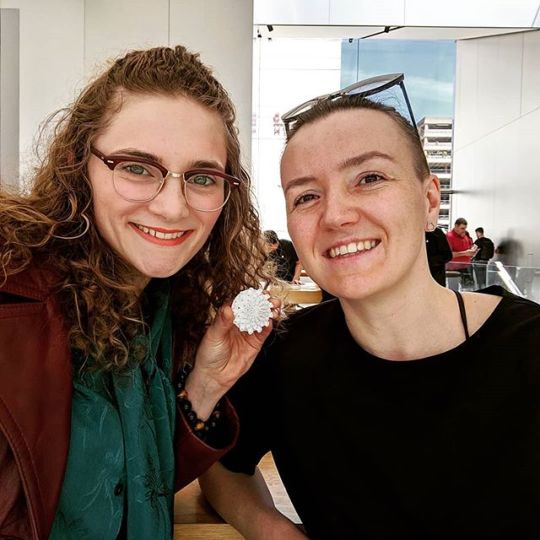
When @womenin3dprinting work together, magic happens! Had such a fun time brainstorming with you @nadia.k.lab and so excited to collaborate as a community. This is her multipurpose magnetic broach/necklace/bracelet generative modeling design! #3DPrinting #Womenin3DPrinting #WomeninTech #WomeninBusiness #WomeninDesign #WomeninArchitecture #JewelryDesign #3DPrintedJewelry #TechLife #WomeninRobotics #SanFrancisco #BayArea #FashionDesign #FashionTech #Broach #GenerativeDesign #GenerativeModeling #3DModeling via Instagram http://bit.ly/2P5f4M5
0 notes
Text
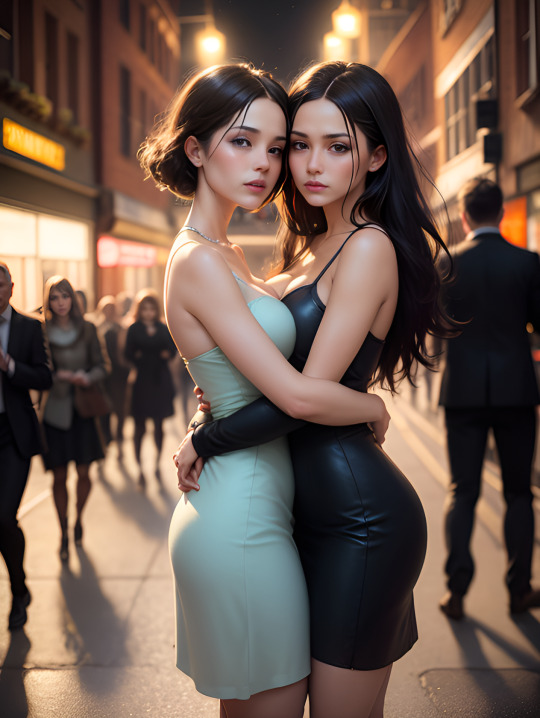

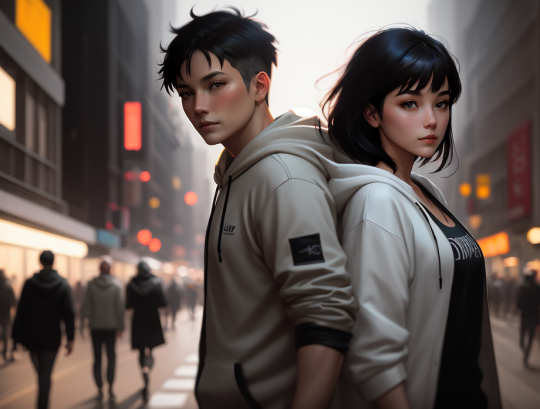

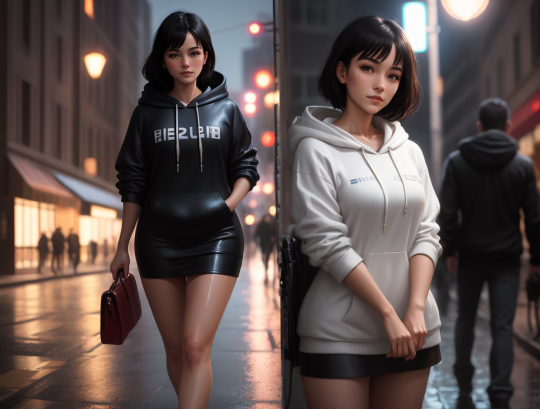


beautiful woman, short blue dress, sexy figure hugging, cleavage, club party, bright lights, sad, romanticism by greg rutkowski and jeremy mann francis bacon. oil on canvas painting of a medieval battle scene in the city assemblies through glass or buildings with many people dancing around it as if they were playing cards while drinking beer at night - w 7 6 8 4 9 1 2 3 hd
#neuralnetwork#artificialintelligence#generativemodel#deepneuralnetwork#art#paintings#creativity#experiments#computationalgraphics#innovation#woman#girl#sexy#nudity
0 notes
Text



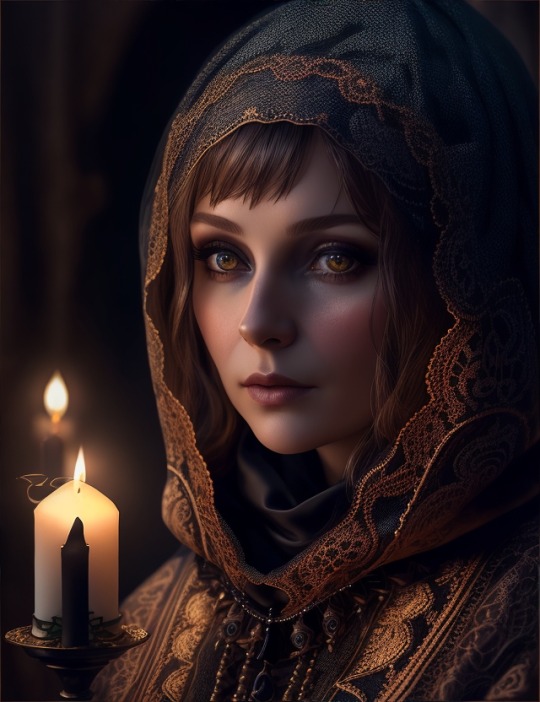
Intricate portrait russian woman , illuminated by warm litted candles, with a backdrop of eerie dungeon . stunning interpretive visual, maximalist scarf and veil. f1.0lens, tilt-shift, shalllow DOF. dramatic lighting. chiaroscuro,
#neuralnetwork#artificialintelligence#generativemodel#deepneuralnetwork#art#paintings#creativity#experiments#computationalgraphics
1 note
·
View note
Photo
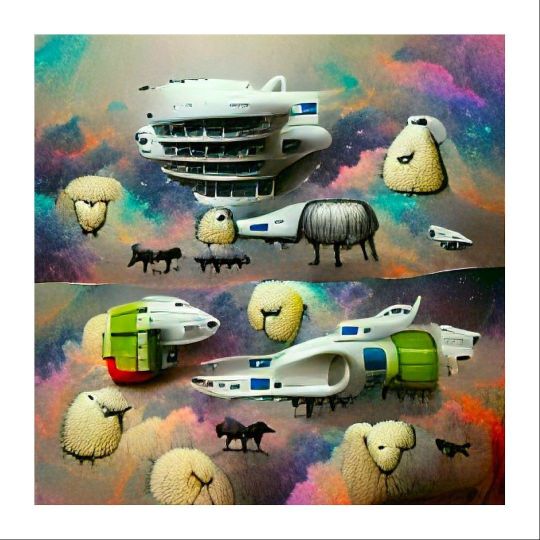
"Starships and Star Sheeps" The legendary reunion of space sheep and space ships happened. Will everything go smoothly or will something go wrong in this situation? No one knows. #geneartor #design #abstract #sheep #space #machinelearning #generativemodels #generativedesign #generativegraphics #cosmos #planet #stars #ship #elonmusk #mars #creative #rendering #graphicdesigner #earth #gradient #decor #actual #artist artist insta: @geneartor_com welcome 😍 https://www.instagram.com/p/CcluaT1qtTA/?igshid=NGJjMDIxMWI=
#geneartor#design#abstract#sheep#space#machinelearning#generativemodels#generativedesign#generativegraphics#cosmos#planet#stars#ship#elonmusk#mars#creative#rendering#graphicdesigner#earth#gradient#decor#actual#artist
0 notes
Photo
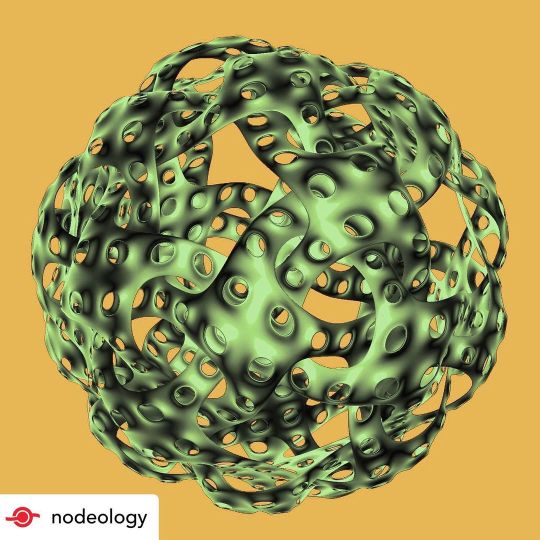
Art by @nodeology Interwoven Pattern on Sphere …………………………………… #parametricdesign #parametric #parametricmodeling #codingForm #algorithmic #algorithmicdesign #algorithmicmodeling #nodebased #visualprogramming #computationaldesign #creativecoding #generativedesign #generativemodeling #proceduralmodeling #proceduralgeneration #facadelovers #facadeporn #facades ……………………………………… Made with #nodeeditor in #moi3d not #grasshopper3d https://www.instagram.com/p/CcxPekvL1Jk/?igshid=NGJjMDIxMWI=
#parametricdesign#parametric#parametricmodeling#codingform#algorithmic#algorithmicdesign#algorithmicmodeling#nodebased#visualprogramming#computationaldesign#creativecoding#generativedesign#generativemodeling#proceduralmodeling#proceduralgeneration#facadelovers#facadeporn#facades#nodeeditor#moi3d#grasshopper3d
0 notes